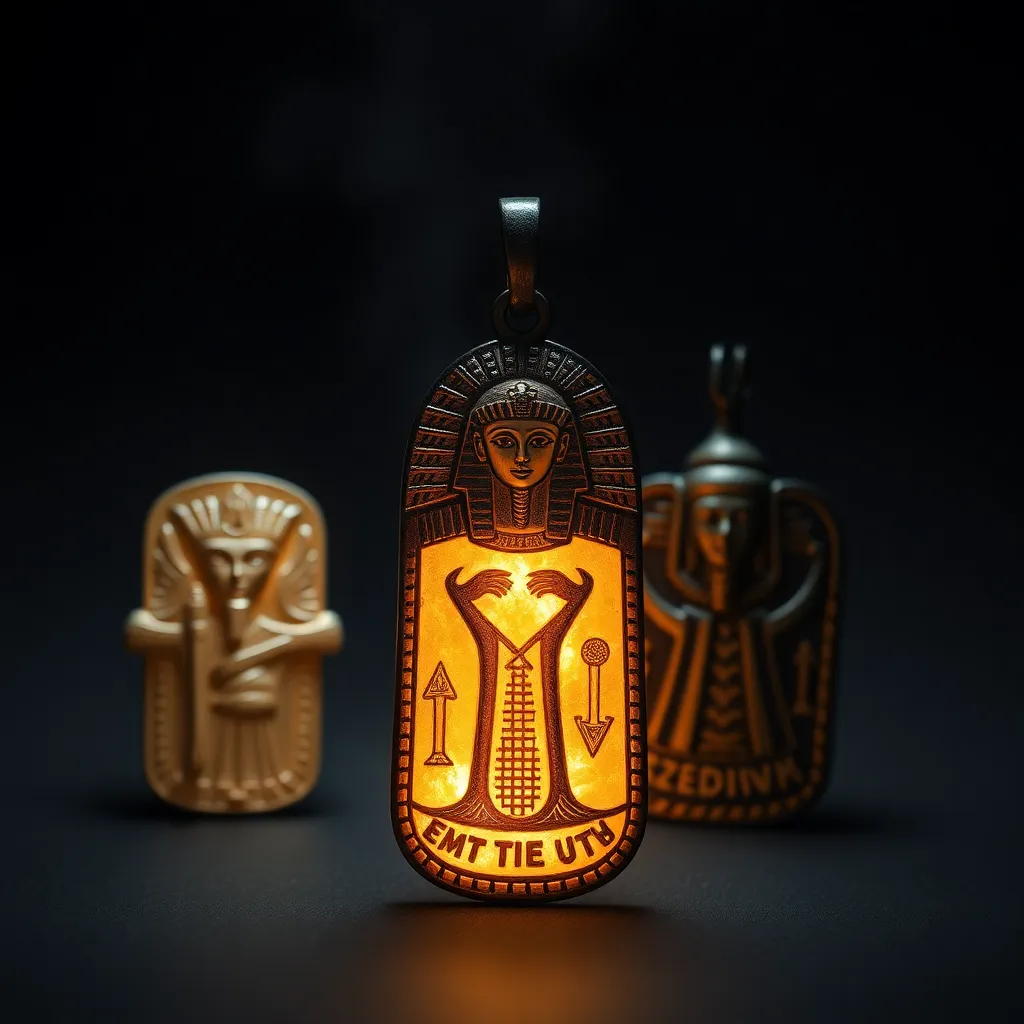Amulets for Protection Against Darkness in Ancient Egypt
I. Introduction
Amulets have played a significant role in various ancient cultures, serving as protective objects believed to ward off evil spirits and bring good fortune. In ancient Egypt, amulets held particular importance, both in daily life and in the spiritual realm.
This article explores the concept of protection against darkness in ancient Egyptian society, focusing on the role of amulets as powerful symbols of defense against chaos and malevolent forces.
II. Historical Context of Amulets in Ancient Egypt
The usage of amulets dates back to the early dynastic period of ancient Egypt, demonstrating their integral role in the culture. Amulets were often made of various materials such as stone, metal, and clay, and their designs evolved significantly over the millennia.
Initially, simple shapes and symbols were favored, but as time progressed, amulets became more intricate and diverse, reflecting the changing beliefs and artistic styles of the time. The cultural beliefs surrounding life, death, and the afterlife were central to amulet usage, as they were thought to protect the wearer in both realms.
III. Symbolism of Darkness in Ancient Egypt
In ancient Egyptian mythology, darkness was often associated with chaos, evil spirits, and the underworld. The Egyptians viewed darkness as a powerful force that needed to be countered by light and order. This duality created a strong symbolism surrounding light and protection.
Notably, the sun god Ra represented light, while the god Set was often associated with chaos and darkness. This contrast emphasized the importance of protective measures, such as amulets, to ensure safety against the threats posed by darkness.
IV. Types of Protective Amulets
Ancient Egyptians utilized various types of amulets specifically designed for protection against darkness. Some of the most common amulets included:
- Eye of Horus: Symbolizing protection, healing, and restoration.
- Scarab Beetle: Representing rebirth and transformation, it was believed to protect against evil.
- Ankh: The symbol of life, it was often used to ensure protection and longevity.
These amulets were crafted from a range of materials, including faience, gold, and semi-precious stones. The craftsmanship involved in creating these amulets was significant, as artisans imbued them with spiritual significance through intricate designs and inscriptions.
V. Rituals and Practices Associated with Amulets
The process of consecrating an amulet was essential for ensuring its protective powers. This often involved rituals performed by priests, who would invoke the gods to bless the amulet and infuse it with protective energy.
Personalization of amulets was common, allowing for individual protection. Names, spells, and specific symbols were often added to reflect the unique needs and circumstances of the wearer.
VI. Case Studies: Archaeological Discoveries
Significant archaeological discoveries have provided valuable insights into the use of protective amulets in ancient Egypt. Notable finds include:
- The Tomb of Tutankhamun: Over 140 amulets were discovered, showcasing the importance of protection in the afterlife.
- Amulets in Burial Contexts: Amulets found in graves often included inscriptions that revealed the beliefs surrounding protection against darkness.
These discoveries have enhanced our understanding of ancient Egyptian beliefs, illustrating how amulets were not merely decorative items but vital tools for ensuring safety in both life and death.
VII. Legacy and Influence of Amulets in Modern Culture
The tradition of using amulets for protection persists in modern society, with many individuals still believing in their power. Ancient Egyptian motifs have influenced contemporary jewelry designs, with symbols like the Eye of Horus and scarab beetles becoming popular in personal adornments.
This resurgence of interest in ancient protection practices reflects a broader fascination with spirituality and the historical significance of amulets. Modern practitioners often seek to connect with the past through these symbols, reaffirming their relevance today.
VIII. Conclusion
Amulets for protection against darkness were vital components of ancient Egyptian society, embodying the cultural beliefs surrounding safety, spirituality, and the afterlife. Their enduring legacy continues to resonate in contemporary practices, highlighting the timeless importance of protective symbols.
As we reflect on the intersection of history, spirituality, and cultural practices, it is evident that the ancient Egyptians’ understanding of darkness and the protective power of amulets remains relevant, inspiring curiosity and reverence for their rich heritage.




